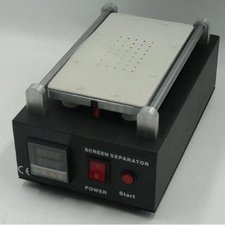Efficient removal of iPad 2/3/4 assembly adhesive - opinions needed!
Hey, guys. I've just sent this question in an email to a fellow repair technician I'm in contact with, and thought it may well be worth posting publicly, as I'm curious as to the different answers and techniques people may have.
I find myself searching "how to clean adhesive off ipad" far too often, in the hope that I'll stumble across some "magic bullet" in the form of a new chemical cleaner or updated guide to help speed the process along.
The technician I've emailed has done literally hundreds of them, so I figure he's got the removal of old adhesive down to an art form at this point. I'm approaching my 20th iPad repair, and it's still taking much longer to completely remove old adhesive that I'd prefer.
Here's my current technique, which I hope you can weigh in on and help me improve, as I don't feel it to be particularly efficient:
- I completely remove the old glass assembly and LCD.
- I remove any and all of the actual 'tape' I can find using the flat end of a plastic spudger.
- I pour a small amount of WM Barr's "Goof Off!" into a spray bottle's protective cap.
- I dip a cotton swab in the GO and use it to saturate an area on the iPad's metal border, and leave it for 2 minutes.
- I use a combination of dry cotton swabs and the flat end of the plastic spudger to wipe up as much of the glue as possible.
- I wipe the area clean using a bit of tissue paper.
- Rinse and repeat - saturate, leave for 2 minutes, wipe up, tissue paper - until all of the residue is gone in that area. To try and speed things up, I tend to have one side saturating while I'm working on the opposite side.
- I give the areas a clean down after all of the residue is removed using 99% isopropyl and cotton swabs.
The technique works, but it's taking me maybe an hour per iPad, and I'm convinced there has to be a better way to do it. A better adhesive remover, or that I'm missing some important element that I should be taking into account.
Goof Off! was recommended by one of the other fixers on this forum, but to be honest I'm not particularly impressed with it. I was expecting the glue to be completely dissolved after a couple of minutes contact with it, and that it'd just wipe up with the residue GO after.
Cheers,
Craig J.
Es esta una buena pregunta?


 5
5  4
4  1
1 






1 comentario
kerosene, dummy!
- de Asus Kybd